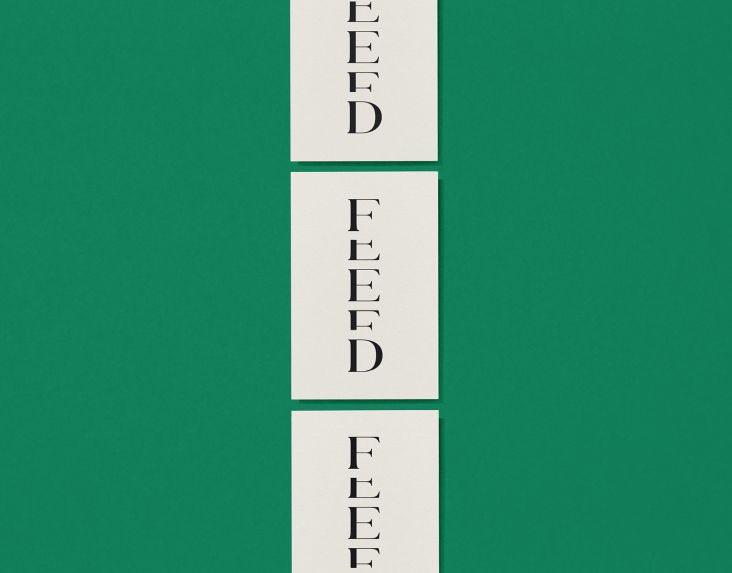How Sapiens became a comic book guide to the history of mankind
Yuval Noah Harari's Sapiens: A Brief History of Humankind was first published in 2014, and remains on bestseller lists worldwide thanks to how Harari's 'big picture' approach to human history and his storytelling ability combine to illuminate the way we live today.
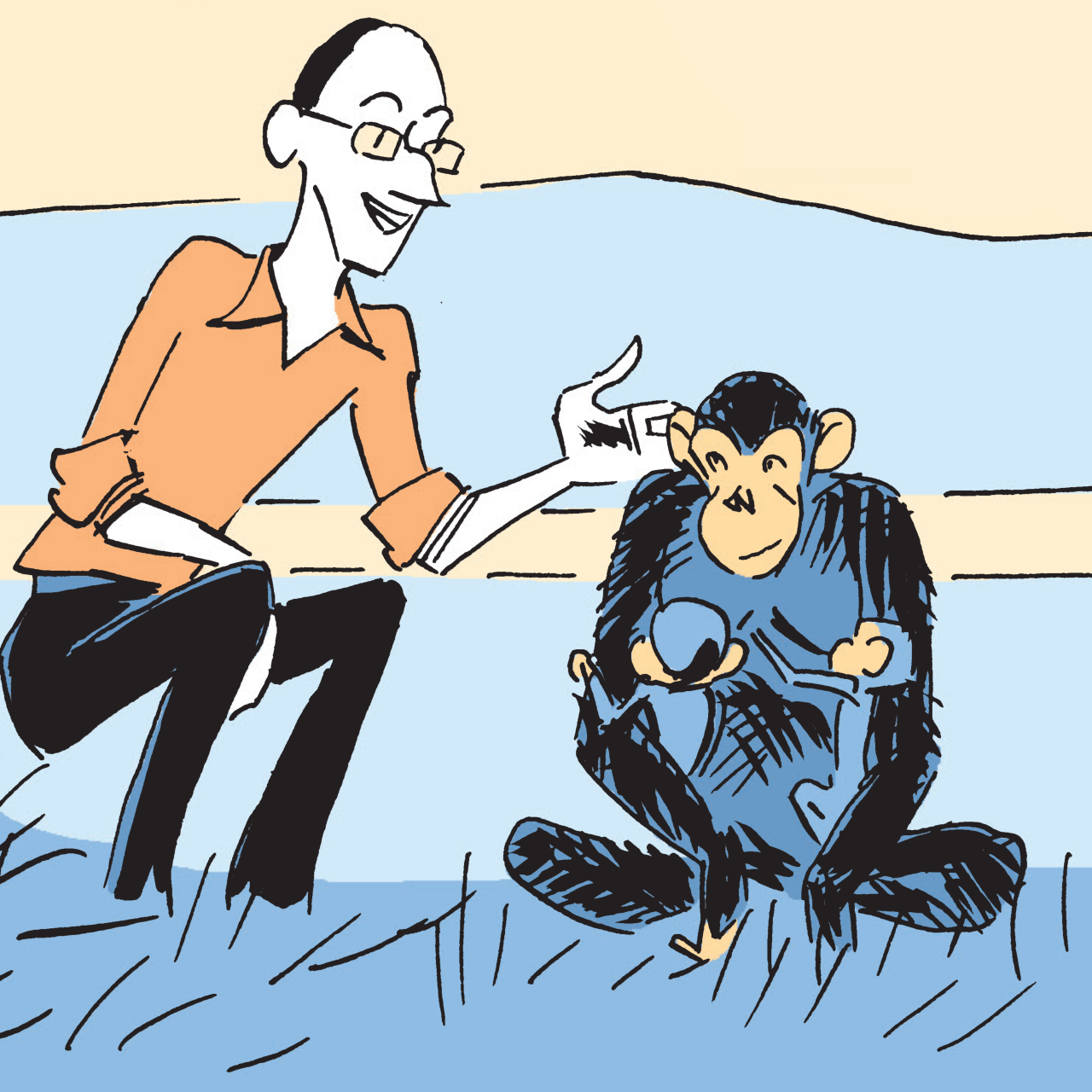
Daniel Casanave
In what is described as the first "graphic history" of humankind, Sapiens has been reimagined in a graphic novel in collaboration with comics artists David Vandermeulen and Daniel Casanave.
In Sapiens: A Graphic History, Harari's ideas continue to help us understand global events and participate in our times' most important conversations – but now in vivid colour with Casanave's illustration magic.
"We wrote this first volume in a year," says co-writer Vandermeulen. "His original structure is one of the strengths of the book. That meant I didn't have to rework the structure and so I saved a lot of time. Then, of course, there is Daniel Casanave's talent, one of the fastest illustrators I know. They don't call him Danny the Arrow for nothing!"
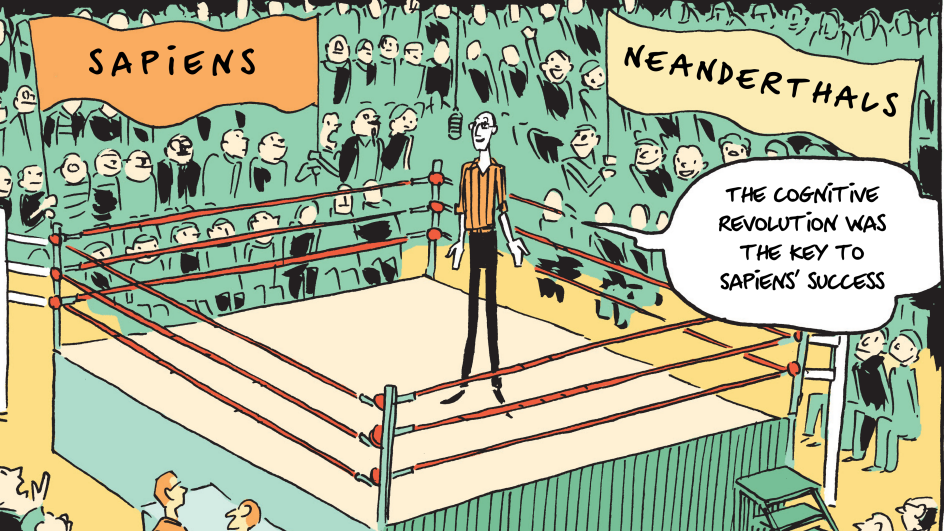
Daniel Casanave
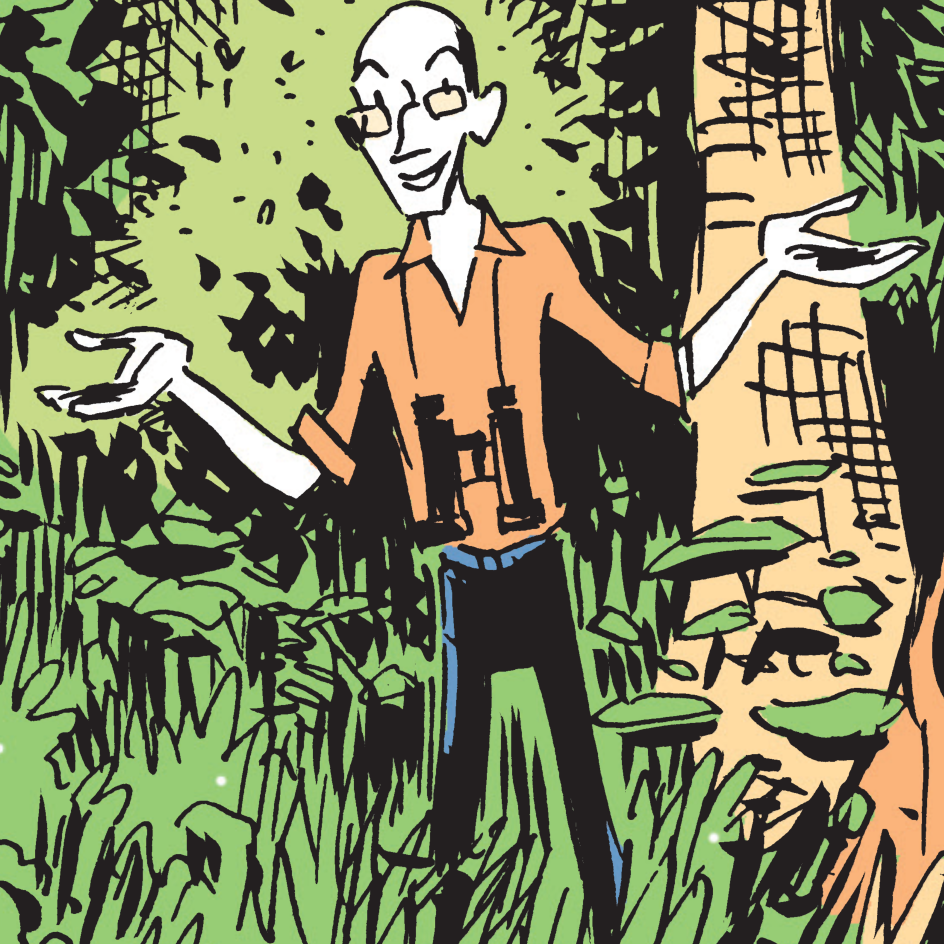
Daniel Casanave
Accompanied by a whole host of fictional, globetrotting characters including the gay Neanderthals, the all-powerful Doctor Fiction and the world's worst-ever serial killers, readers are invited to take a ride on the wild side of history. The graphic format offers a new intellectual and artistic exploration of the past: human evolution is reimagined as a tacky reality TV show, the first encounter between Sapiens and Neanderthals is explored through the masterpieces of modern art, and the extinction of the mammoths and sabre-toothed tigers is retold as a 'whodunit' movie starring a Detective Lopez.
"For this project, my personal contribution was mostly in how the scenes were presented, the dialogue and the creation of the various characters. This was all done with input from Yuval, who was very involved in the project.
"Each of Yuval's concepts or big ideas begins, for example, at the start of one page and the end of another. The information presented is equally distributed among the characters: Professor Saraswati speaks only on biology and zoology, Father Klüg deals with archaeology and theology. Yuval certainly wasn't worrying about these sorts of details when he wrote Sapiens several years ago. His sentences might very well begin with biology and touch on archaeology before finishing with a theological observation. That might not sound like much, but it was a real challenge in adapting the text through the language of a graphic novel!"
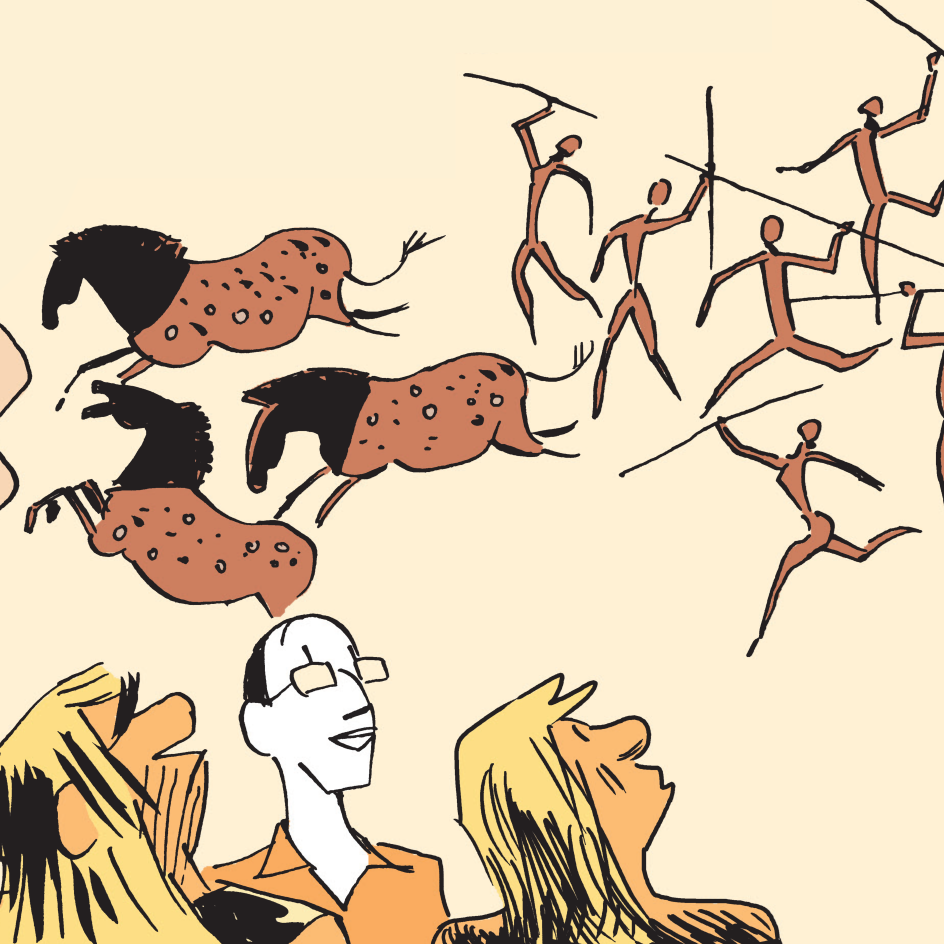
Daniel Casanave

Daniel Casanave
"I don't know why, but the last chapter, the police investigation, poured out of me," David continues. "Stepping back, I think this one was made easier because I had succeeded in giving Detective Lopez a strong and consistent personality as a New York cop.
"You can see in it almost as much historical and scientific information as in other sections, but it is how the story unfolds that really grabs you. You forget you are consuming scientific facts. It brings together two of the most important things in this book: succeeding in making Yuval's words more attractive and accessible to those who might not have engaged with them before now, and explaining lots of scientific and historical concepts while creating exciting stories and situations for the reader."
Sapiens: A Graphic History will be published in four volumes, starting with Volume 1 – The Birth of Humankind out now around the world.
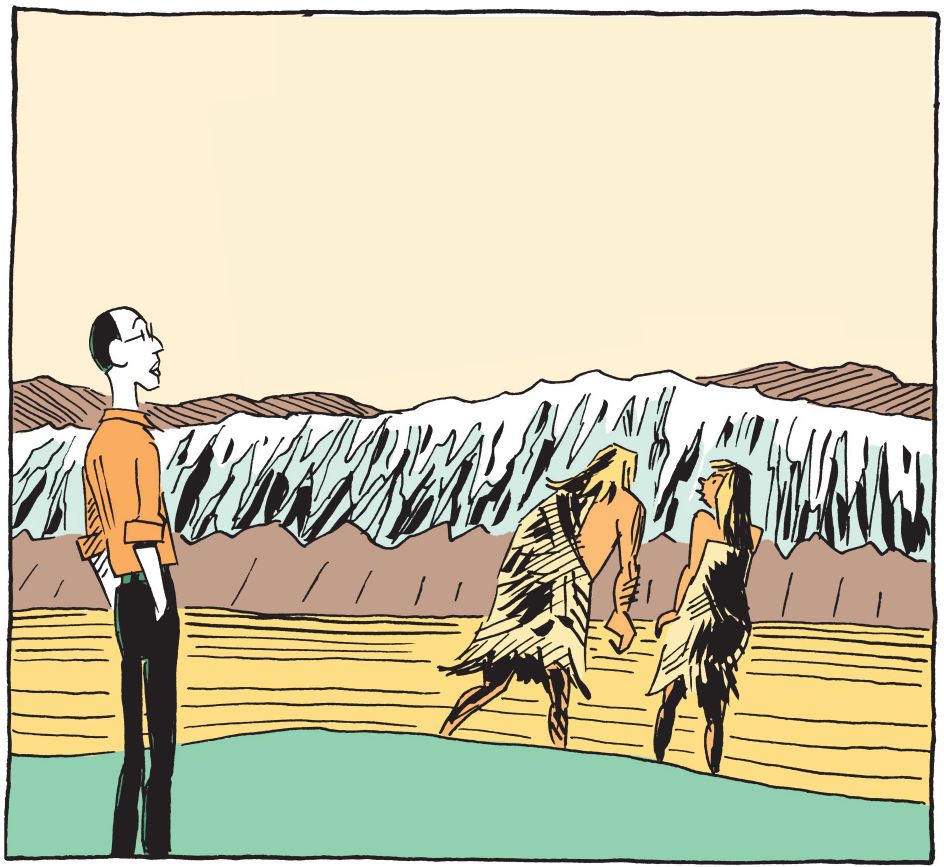
Daniel Casanave
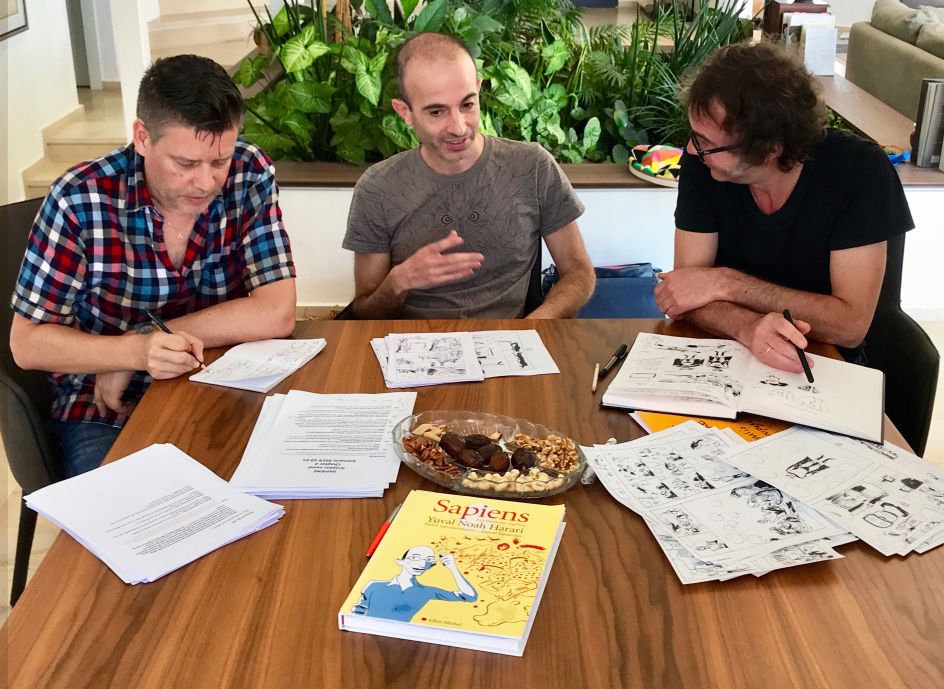
The trio at work




 by Tüpokompanii](https://www.creativeboom.com/upload/articles/58/58684538770fb5b428dc1882f7a732f153500153_732.jpg)


 using <a href="https://www.ohnotype.co/fonts/obviously" target="_blank">Obviously</a> by Oh No Type Co., Art Director, Brand & Creative—Spotify](https://www.creativeboom.com/upload/articles/6e/6ed31eddc26fa563f213fc76d6993dab9231ffe4_732.jpg)












